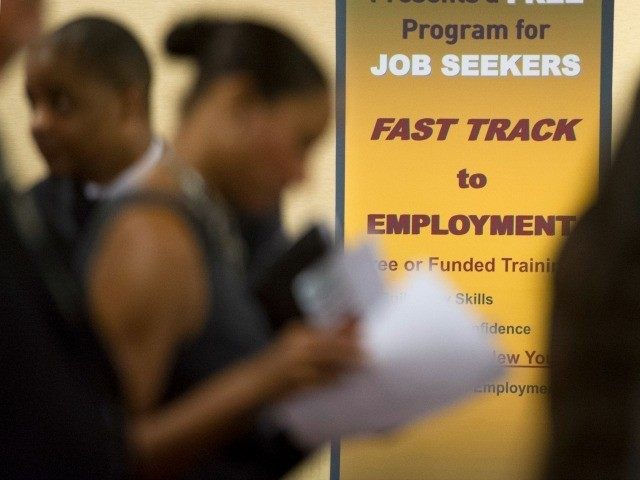Corresponding with the national increase in Americans not in the workforce the number of women, African Americans, and Asians not in the workforce also experienced an increase in March.
According to data released Friday by the Bureau of Labor Statistics, 56,131,000 million women were not in the labor force last month, an increase of more than 100,000 from February when 56,023,000 women were not in the workforce.
The level is a record high, and the labor force participation for the month of March at 56.6 percent is a 27-year low, according to CNS News. In February that rate for women was 56.7 percent.
People not in the labor force are defined as those 16 years and older who are not employed and have not “made specific efforts to find employment sometime during the 4-week period ending with the reference week.”
The unemployment rate for women did decline, from 5.4 percent to 5.3 percent.
The number of African Americans not in the labor force also experienced a slight increase in March to 12,202,000 from 12,122,000 in February. And the labor force participation rate also took a slight dip from 61.2 percent to 61.0 percent.
African American unemployment also remained high at 10.1 percent, but did decline from 10.4 percent in February.
Asians experienced a slight uptick in the population not in the work force as well, with 5,363,000 in March, compared to 5,253,000 in February. And their participation rate also declined from 63.2 percent in February to 62.5 percent in March. Asian unemployment was down to 3.2 percent in March, from 4.0 percent in February.
The Latino population was one group that saw a decline in the number of people not in the workforce, with 13,236,000 in March, compared to 13,282,000 in February. The participation rate increased as well, with 66.3 percent in March compared to 66.2 percent last month. The unemployment rate increased from 6.6 percent to 6.8 percent in March.
And the unemployment rate for teens, ages 16-19, also experienced an increase in March up 17.5 percent, from 17.1 percent in February. Teenage males had a higher unemployment rate than their female counterparts 19.8 percent to 15.2 percent respectively.
Indeed while teenage male unemployment jumped in March from 17.8 percent in February, females experienced a dip in employment from 16.4 percent in February.
Nationally number of people not in the labor force also reached a record high of of 93,175,000 and the unemployment rate remained at 5.5 percent.

COMMENTS
Please let us know if you're having issues with commenting.